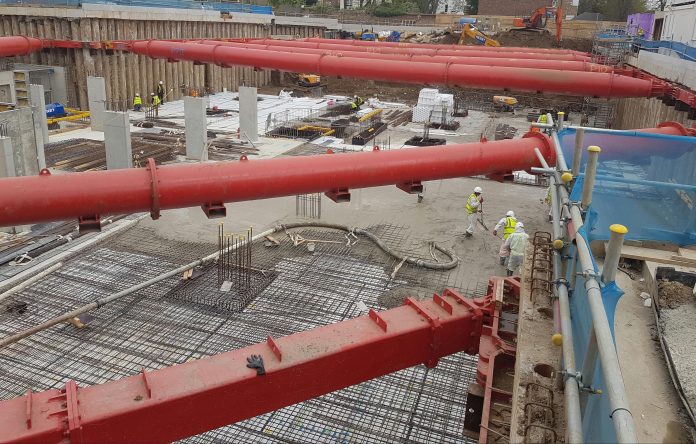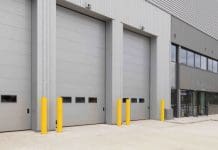In the latest in a series of articles, James McDonald of Cementaid discusses the various methods of testing the water permeability of concrete to consider when specifying a product
In January, I discussed the problem of a lack of a definition for ‘waterproof concrete’, with the April article dealing with the need to specify properly in order to achieve the required outcome.
As the author of a 1993 article in the Professional Builder entitled “Basement waterproofing. Application of a performance specification on Suntec City Project” stated: “To prevent the use of ineffective or unproven materials, a performance specification based on a simple test and a proven record was adopted. There is widespread agreement that concrete performance parameters other than strength should be specified and closely monitored, such consensus has not existed on what parameters and test procedures should be used”. Here we are in 2018 and nothing has really changed.
The Building Research Establishment carried out tests on various so-called waterproofing admixtures (N159/85, Tests on Water Resisting Admixtures for Concrete, 1987, by BW Adderson & MH Robertson) and these tests included initial surface absorption (ISAT), RILEM capillary and RILEM water immersion, which are all capillary absorption tests, plus DIN and vacuum soaking, which are pressure tests. Each of these tests was carried out using three different curing regimes.
Of the nine products put forward for testing, five were shown to be worse than the control samples in 10 or more of the 15 tests. In fact, of the 135 results, 73 (54%) were worse than the ‘control’ mix with NO waterproofing admixture.
Two aspects need to be considered. First, what test(s) are most relevant and, secondly, simple and easy to carry out with a relatively quick result? As discussed in the first article in January, the strength of the concrete has very little to do with waterproofing; what is required is for the designed strength concrete to be waterproof whether that is 30, 40 or 50MPa. So when you see a BBA certificate quoting results for a waterproofing admixture at 80+MPa compressive strength, you start to wonder why when after 40 years in this industry, I have never seen a requirement for this strength of concrete in a basement.
There have been many specifications over the years where pressure permeability has been a criterion for product selection. Great, but properly compacted concrete without defects is watertight. That is, water will not freely run through the concrete. Get the most powerful fire hose available and crash the water against a properly compacted concrete wall, will the water come gushing out the other side? No, it won’t, because taking into account surface blemishes like blow holes, within a few mm of the concrete surface the water pressure will be reduced to one atmosphere. So what is the principal mechanism for water passing through concrete? Capillary absorption – and it requires no pressure at all!
So, as with Suntec City, I would suggest the criteria should be capillary absorption testing and BS1881:122 is a simple, easy test that was used. Though the standard calls for a 28-day test period, the time can be reduced to seven days and the results will be immaterially different. It simply involves making concrete cylinders, 75mm diameter x 75mm height, curing them, drying them, weighing them and then placing them in water for 30 minutes and re-weighing. The percentage difference in weight is then calculated.
With ordinary concrete, the result is usually about 2.5%, so for anything worth being categorised as ‘waterproof’ at least a 60% reduction should be achieved, so less than 1% should be specified. Now 2.5% does not sound a lot but concrete has a specific gravity of around 2.4 while water is one. So the volume of water absorbed is 2.4 x 2.5%, or 6%. This is the equivalent to a cubic metre of ordinary concrete absorbing 60 litres of water in just 30 minutes.
However, you can achieve many results in a laboratory that cannot be replicated on site. As such, the BS1881-122 test is not, on its own, a guarantee that the concrete will perform as required, so it should be combined with an additional test.
The Eurocode EN934:2 has a capillary test requirement for “water-resisting admixtures” but it must be recognised that the pass requirement has nothing to do with product efficacy; it is purely a very low threshold in order for such products sold to be put in a ‘box’. The threshold is so low that almost all superplasticisers pass the test! Why does the EU want everything put in a box? Control, so that duties and tax can be set and levied as required.
The test is as specified in BS EN 480-5:2005, “Admixtures for concrete, mortar and grout. Test Methods. Determination of capillary absorption”. The only snag with this test is that it takes time but it is simple and does not require complicated equipment. The samples are cured for 90 days, stood up in 3mm of water and left for 28 days and the difference in weight is measured.
The photo shows the prism samples where the control, left, is completely saturated after only a few hours, whereas the product under test is completely dry. To CE mark an admixture in conformity with EN 934-
2:2009 (Admixtures for concrete, mortar and grout), Table 9 (Water-resisting admixtures), this test requires the admixture samples to be less than 60% of the control samples in regard to water absorbed.
So if the average weight increase of the control samples is, say, 20 grams and those containing the admixture is 10 grams, the result for the admixture would be 50% of control and so the test is passed.
Now, halving the amount of water the concrete can absorb sounds quite good, except that all the water-resisting admixtures specify the use of a superplasticiser, whereas the control samples are made according to the standard, which excludes a superplasticiser.
What does that mean? Well, let us assume that to achieve a slump of 100mm, the control samples will have a water-to-cement ratio of 0.5. The standard requires the use of 350kg/m3 equivalent of cement, so the water added is 175 litres. Water required to hydrate the cement is 28% of the cement content, so 98 litres, leaving 77 litres of water that can evaporate from the concrete, leaving pores and capillaries in the concrete. That represents voids of 7.7%.
However, it is not possible to achieve 100% compaction and in the cement hydration process, drying shrinkage occurs. So in practice, the amount of water that can be absorbed by ordinary concrete is in the region of 12 to 15% by volume. If we assume 12% and deduct from this the 7.7% caused by the excess water over and above what is necessary to fully hydrate the cement, we can estimate that voidage due to incomplete compaction is 4.3%.
Modern high range water reducing admixtures can easily reduce the water requirement to achieve the same slump by 30%. So in the example above, the water required is only 122 litres (175 litres less 30%), 98 litres of which is required for cement hydration, leaving 24 litres (or 2.4% by volume) that will form part of the pore and capillary network in the concrete. If one adds to this, the voidage due to shrinkage and lack of 100% compaction, the total amount the superplasticised concrete will absorb is about 6.7%. Mathematically, if the ordinary concrete has voids of 12%, the superplasticised concrete is 56% of this figure. So when you see a BBA certificate stating that the admixture achieves 59% of control, you wonder what the admixture is doing.
In specifying, what one really needs if an effective waterproofer is required is not just to state that it must be CE marked under Table 9 of EN934-2, but in terms of BS EN 480-5:2005, the product when cured for 90 days and tested for 28 days must be less than 25% of the control. Anything more than this, I would suggest, can hardly be classified as efficacious.
Of course, there are numerous tests relating to concrete. I’ve already mentioned a few but other common ones include drying shrinkage, wetting expansion, vapour resistance, flexural strength and bond strength of reinforcement to concrete. However, firstly are they waterproofing tests and secondly are they complicated tests requiring expensive equipment with long testing times? In terms of waterproofing, the point to note is that it is the speed of absorption that matters and, as Dr Tom Harrison was quoted as saying in 1988 about corrosion and Spaghetti Junction: “The main mechanism is not diffusion but capillary action, it soaks it up like a sponge.”
In summary, there is no definition of “waterproof concrete”, so specifying as such is clearly inadequate without a performance specification. Most British Board of Agrément certificates for so-called waterproofing admixtures make no mention of the word “waterproof”; at best, reference is made to “water resisting”. As the term implies, this can range from products offering virtually no resistance at all up to high-levels of resistance.
Two tests for waterproofing have been suggested above but if your application has anything to do with corrosion protection, there is a third, though some might say the only, test and that is track record. Does the product have a successful, proven track record of at least 15 years without deterioration in a similar aggressive environment? By ‘aggressive’ we mean in hot climates such as the Middle East, where chloride-induced corrosion is a serious problem. The UK, for example, is not a particularly aggressive environment, so a proven track record in the UK would really mean at least 30 years.
James McDonald
General Manager
Cementaid
Tel: +44 (0)1293 653 900

















